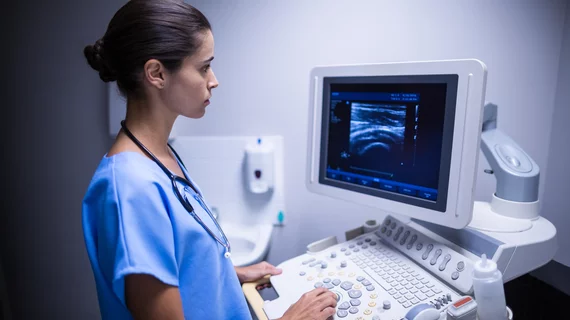How well does O-RADS perform in a nonselected, low-risk cohort?
Researchers recently validated the diagnostic performance of O-RADS ultrasound in a nonselected cohort of 913 women, according to new work published in JAMA Network Open.
The study yielded a malignancy rate of 8.4% for the women who presented for routine pelvic ultrasound without prior suspicion for adnexal lesions. When lesions were categorized as O-RADS 2, this rate dropped to .5% and climbed significantly in the O-RADS 5 category, at 65.6%.
While the efficacy of the ACR’s Ovarian-Adnexal Reporting and Data System (O-RADS) ultrasound (US) has been confirmed in selected populations of women presenting with suspicion of adnexal lesions, less is known about the system’s utility in nonselected populations. A concern with this is that selected populations of women have higher instances of malignancy, which experts worry could impact the diagnostic performance of the scoring system.
Pertaining to previous studies, corresponding author Priyanka Jha, MBBS, of the University of California, San Francisco, and co-authors of the latest research write: “Both the population demographics and the ultrasonography performance are not reflective of clinical practice patterns of many radiology departments in the United States, where women presenting for ultrasonography examinations may not have a known adnexal lesion. When an adnexal lesion is detected, the majority will have benign features, and only lesions with suspicious features will be referred to surgery. As such, the frequency of ovarian cancer in the population of women presenting to radiology is much lower than in a cohort of women being referred to surgery.”
This is what lead experts to analyze the system in a group of women presenting for routine pelvic ultrasound exams. To better reflect common clinical practice, the study also limited eligible exams to only those that had been completed by technologists, rather than radiologists.
Through their work, the experts found that the risk stratification system performed as expected in the low-risk cohort, producing results consistent with those observed when the system is applied with cause. They found O-RADS 4 or higher to be an optimum cutoff for diagnosing ovarian cancer, as it yielded a sensitivity of 90.6%, specificity of 81.9%, positive predictive value of 31.4% and negative predictive value of 99.0%.
“The O-RADS US risk stratification system performed within the expected range as published by the ACR O-RADS US committee. The frequency of malignant neoplasm was at the lower end of the published range, partially because of the lower prevalence of cancer in a nonselected population,” the authors concluded.
View the full study results here.
More on women’s imaging:
Contrast enhanced breast MRI superior to CEM, but accessibility remains an obstacle
MRI-based radiomics boosts triple-negative breast cancer detection
Reactive lymphadenopathy slower to resolve after Moderna COVID vaccination
O-RADS externally validated for differentiating between benign and malignant ovarian lesions

